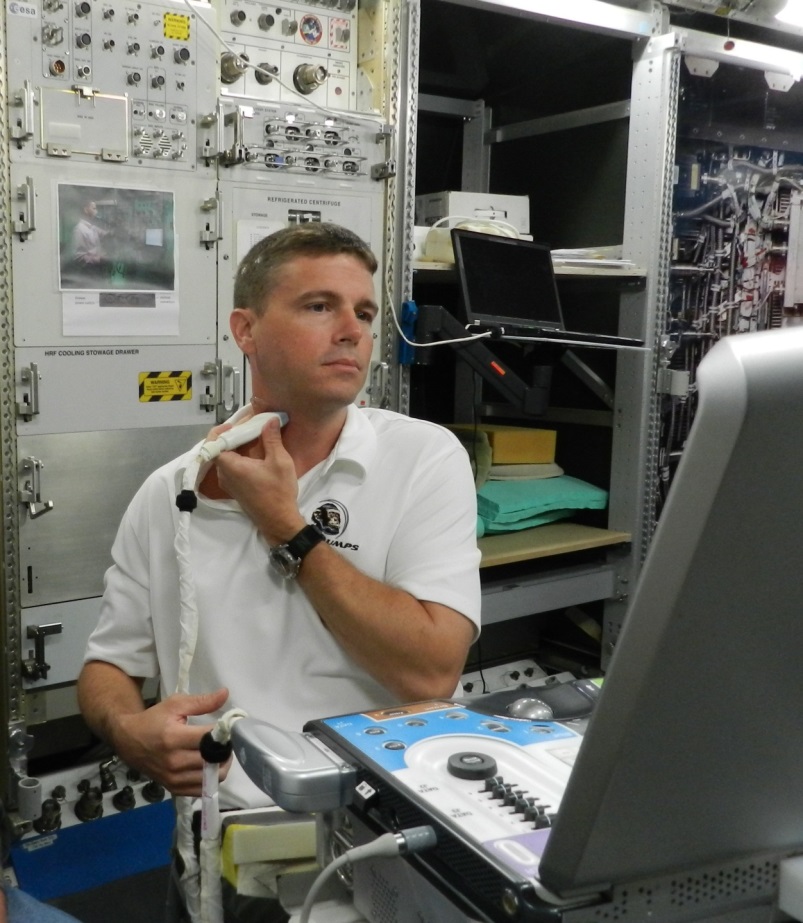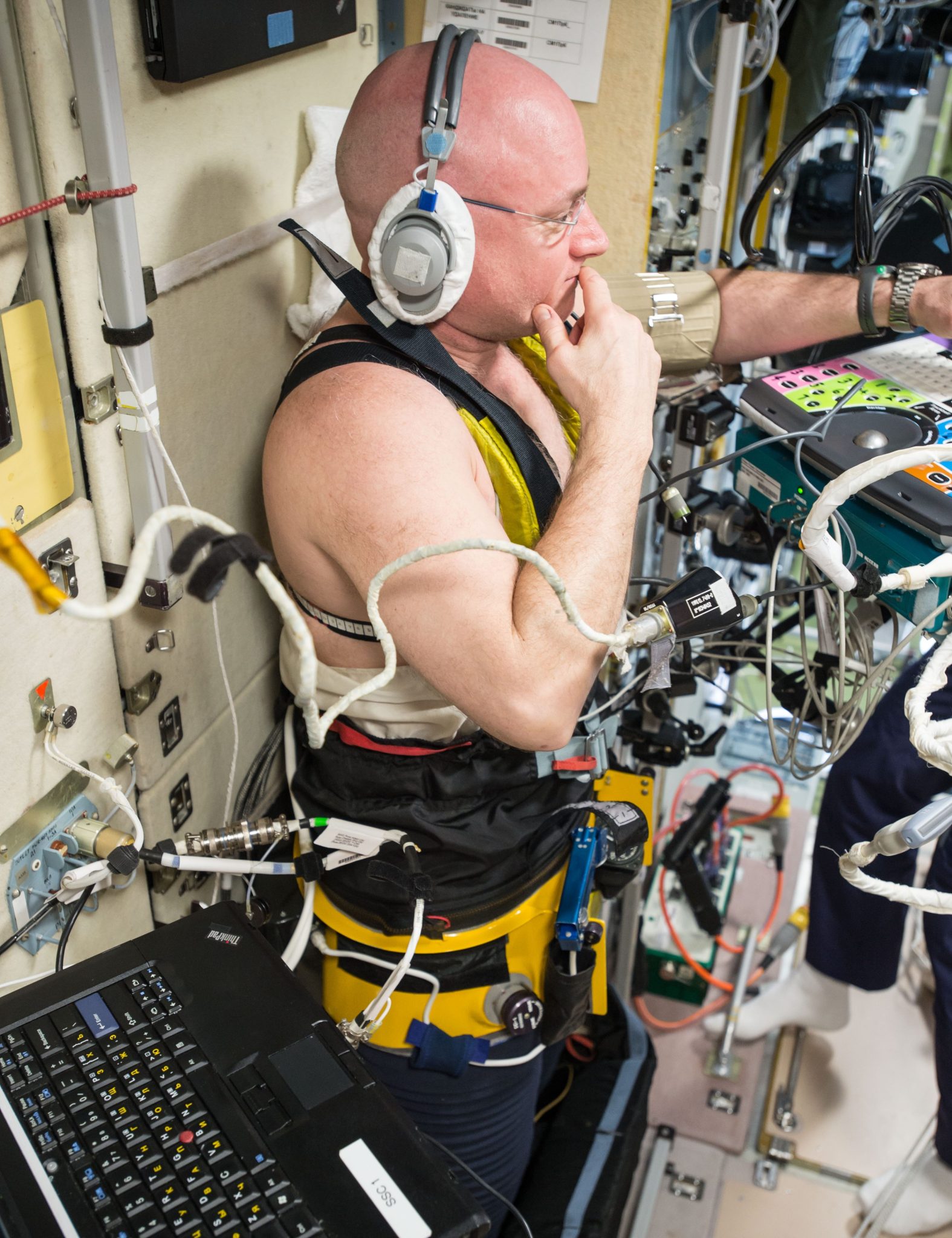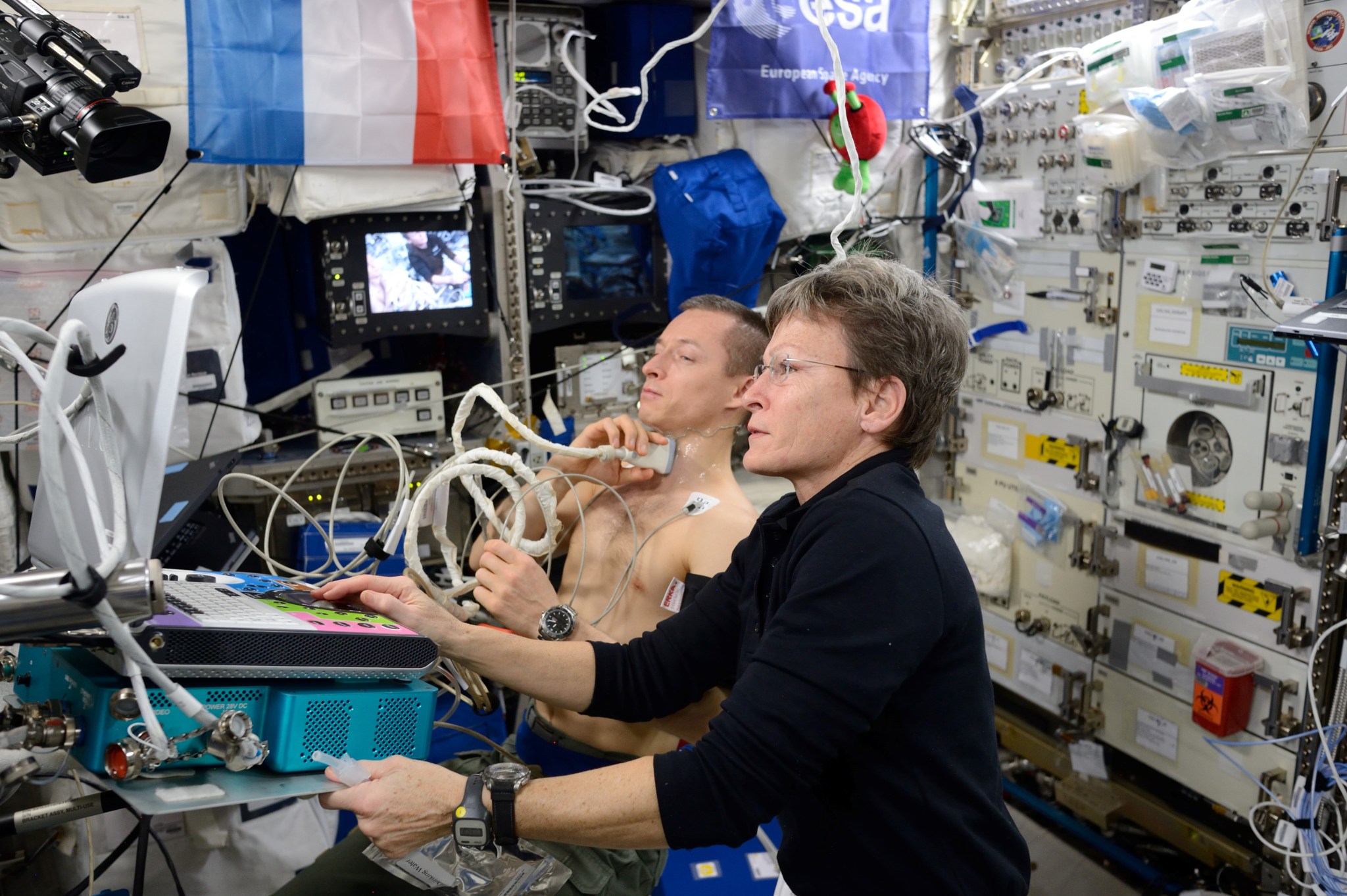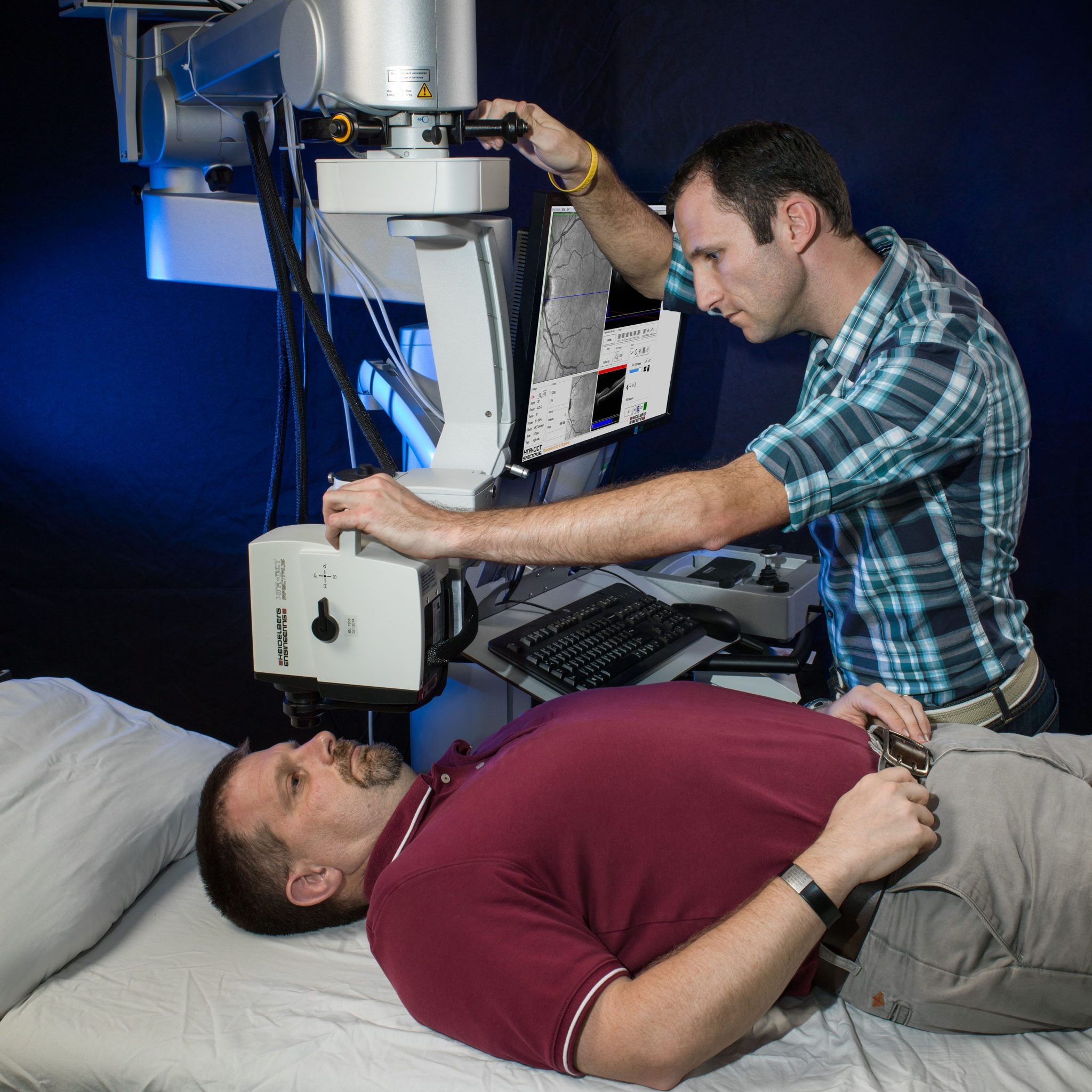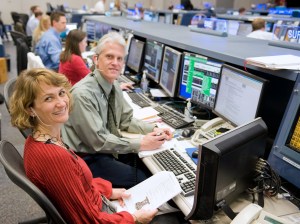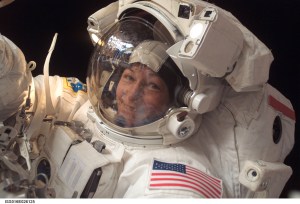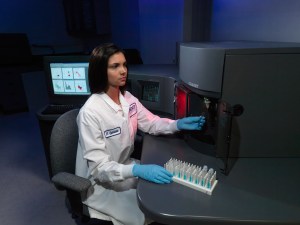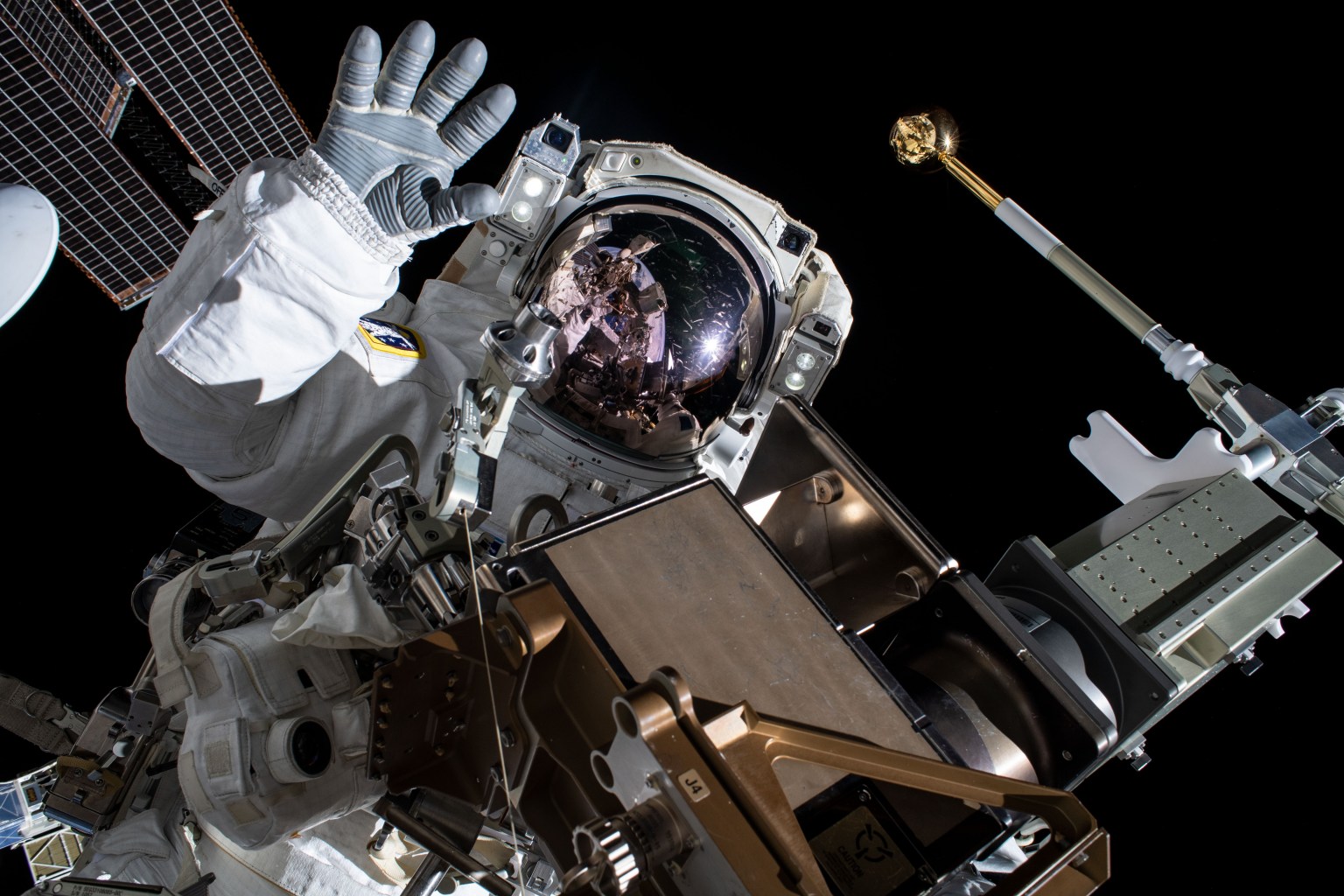Ensuring Astronaut Health
The Human Health and Performance Directorate’s Cardiovascular and Vision Laboratory (CVL) conducts spaceflight and ground-based analog research to (1) understand the cardiovascular and ocular adaptations to the spaceflight environment, (2) assess the long-term health impacts after spaceflight, and (3) develop countermeasures to prevent or reverse these spaceflight-induced changes.
Fun Fact: Upon entering weightlessness, approximately 2 liters of fluid move from the lower to the upper body. The anatomical and physiological changes associated with this headward fluid shift affect the cardiovascular system, eye, and brain.
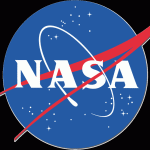
NASA
The Heart of the Matter: Cardiovascular Concerns
When astronauts first launch into space, many describe a sensation of fullness in their face and head. In weightlessness, gravity no longer pulls blood and other fluid downward to the lower body and fluids shift up towards the head; this is known as a headward fluid shift. The body senses this relative increase of fluid in the upper body and the physiological response is to reduce total blood volume. However, when astronauts return to Earth and gravity once again “pulls” blood to the lower body, many crewmembers experience signs of fainting (orthostatic intolerance). The changes in fluid distributions during spaceflight and the potential for associated negative health and performance consequences are an important area of research for the team, as more than 60% of astronauts can be affected by orthostatic intolerance if no countermeasures are used. Female crewmembers are more susceptible to orthostatic intolerance and research into determining how best to protect all crewmembers is ongoing. In addition, it is unknown if the crew will experience similar negative effects when exposed to varying gravity levels that are likely to develop during descent to and ascent from planetary surfaces (moon or Mars). The CVL team has contributed to the development of multiple countermeasures to counteract orthostatic intolerance after spaceflight, including development and testing of gradient compression garments and fluid-loading protocols. The CVL team is working to characterize the fluid shift during gravitational levels less than 1g and when to employ fluid shift countermeasures.
In addition, the “Fluid Shifts Study” conducted on the ISS set out to quantify the headward fluid shift and determine if use of a lower-body negative pressure countermeasure device could reverse the fluid shift. Using ultrasound, the team imaged the heart, blood vessels, and skin thickness before, during, and after spaceflight and determined that the fluid shift appears to what occurs during the supine posture on Earth. However, because crewmembers cannot “stand up” during spaceflight, this fluid shift is unrelenting and the normal daily variations that occur during posture changes on Earth are absent during spaceflight. Countermeasures being tested to temporarily reverse the headward fluid shift include use of lower body negative pressure and veno-occlusive thigh cuffs, both of which are designed to shift fluid and sequester it in the lower body.
During the Fluid Shifts Study, the team also identified slow and stagnant blood flow in veins that drain the head. Stagnant blood flow is known to be a risk factor for blood clot development (thrombosis), and during this study, a blood clot was identified in one crewmember and suspected in a second crewmember. The CVL team will expand research in this area during future studies in parabolic flight and on the ISS to further understand the potential risk of thrombosis development during a spaceflight mission.
Keeping Our EYES on the Prize: Ocular Health
Spaceflight-associated neuro-ocular syndrome (SANS) is characterized by a variety of signs and symptoms associated with the structure and function of the eye and brain. Approximately 70% of crewmembers participating in long-duration missions (~6-months) on the ISS develop SANS findings, such as swelling of the nerve in the back of the eye and flattening of the back of the eye, which can result in the need for a new prescription of their glasses or contact lenses. Though no astronauts to date have had permanent vision loss, swelling in the back of the eye has the potential to impact vision on longer-duration missions to the moon and Mars. Because these findings first emerged in crewmembers flying long-duration missions, there is concern that even longer-duration missions may cause worse SANS findings. The direct cause of SANS is still not fully understood, a leading hypothesis is that the headward fluid shift during spaceflight may be a primary underlying cause of the ocular changes that have been observed. The CVL is actively conducting spaceflight and ground-based analog studies to assess the mechanisms that may contribute to SANS findings, investigate the potential long-term effects to crewmembers, and test potential countermeasures that could be used to prevent or reverse the development of SANS.
Techniques and Equipment
Technology and methodologies used by the CVL team for monitoring and assessing cardiovascular and ocular adaptations to spaceflight and the effects on other physiological systems include:
Cardiovascular
- Ultrasound (vascular, echocardiography, myocardial contrast, ocular, muscle, skin thickness)
- Ambulatory electrocardiogram
- Ambulatory blood pressure monitoring
- Orthostatic tolerance tests (stand test, tilt testing, lower body negative pressure, artificial gravity)
- Lower body graded compression garments
- Transcutaneous CO2 monitoring
Ocular Structure and Function
- Optical coherence tomography (OCT) imaging (can be performed in multiple body postures)
- OCT angiography (can be performed in multiple body postures)
- Intraocular pressure (can be performed in multiple body postures)
- Episcleral venous pressure (can be performed in multiple body postures)
- Visual field testing (standard automated perimetry)
- Optical biometry (fine measurements of ocular structure, including the length of the eye, thickness, and curvature of the cornea, lens thickness, and anterior chamber depth)
- Electroretinography (ERG) (functional test of retinal cells that can be performed in multiple body postures)
- Dynamic vessel analysis (functional test of retinal vasculature)
- Noninvasive intracranial pressure measures (can be performed in multiple body postures)
Collaborations
The CVL team has a demonstrated history of successful collaborations with multiple laboratories and facilities across a variety of programs within NASA including the Human Research, Orion, and Commercial Crew programs, as well as with collaborators external to NASA. These collaborations include work with the Nutritional Biochemistry, Neuroscience, Human Physiology, Performance, Protection and Operations, Fatigue Countermeasures, Human Factors, and Behavioral Performance, and Toxicology and Environmental Chemistry laboratories at JSC, as well as multiple external academic laboratories, international partner agencies, and companies that provide expertise in studying various human physiological systems. The CVL team also routinely supports medical testing of astronauts for the Flight Medicine Clinic and the medical testing required for the selection of new astronaut candidates.
Points of Contact
Brandon R. Macias, PhD
Elisa Allen
Steven S. Laurie, PhD

























